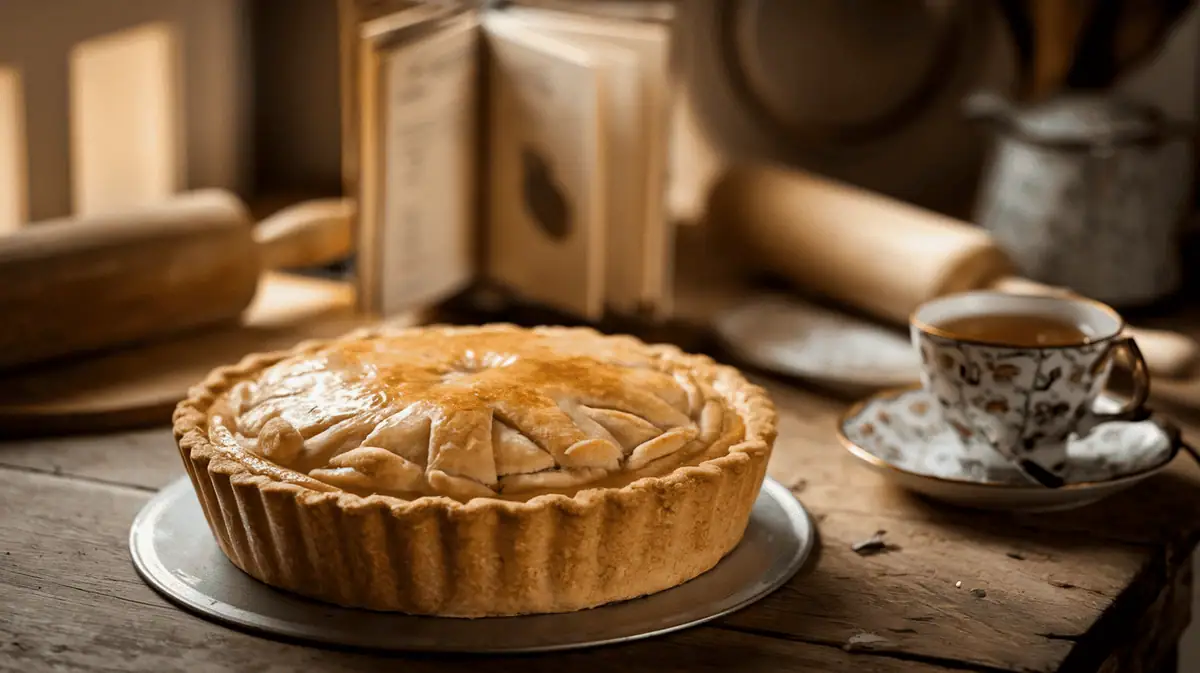Water Pie: The Viral Depression-Era Dessert Making a Comeback!
Introduction
What is Water Pie?
Water Pie is a unique, budget-friendly dessert that originated during the Great Depression. This simple yet fascinating recipe requires only a handful of pantry staples, making it an ideal choice for those looking to create a delicious treat with minimal ingredients. Unlike traditional pies, Water Pie uses water as its main ingredient, proving that creativity in the kitchen can lead to surprisingly tasty results.
This Depression-era dessert is gaining popularity again, thanks to the rise of vintage recipes on social media. Platforms like TikTok and YouTube have introduced a new generation to the simplicity of Water Pie, sparking curiosity about how such a basic recipe can transform into a flavorful dessert. Many home bakers are now experimenting with variations, adapting the original Water Pie recipe to modern tastes.
The Water Pie recipe consists of water, sugar, flour, butter, and vanilla extract, all combined within a traditional pie crust. Despite its simplicity, the baking process allows the ingredients to develop a custard-like texture, creating a comforting and nostalgic dessert. This makes it similar to other historical pies, such as Vinegar Pie and Sugar Cream Pie, which were also created to make the most of limited resources.
For those looking to pair their Water Pie recipe with other minimalist desserts, Baked Pancakes can be an excellent option. Additionally, if you want to explore more frugal baking ideas, Serious Eats provides an in-depth look at classic Depression-era recipes.
The resurgence of Water Pie proves that even the simplest ingredients can create a delightful dessert. As more people embrace vintage cooking, this humble recipe continues to captivate bakers worldwide.
The Origins of Water Pie
The Great Depression and Frugal Cooking
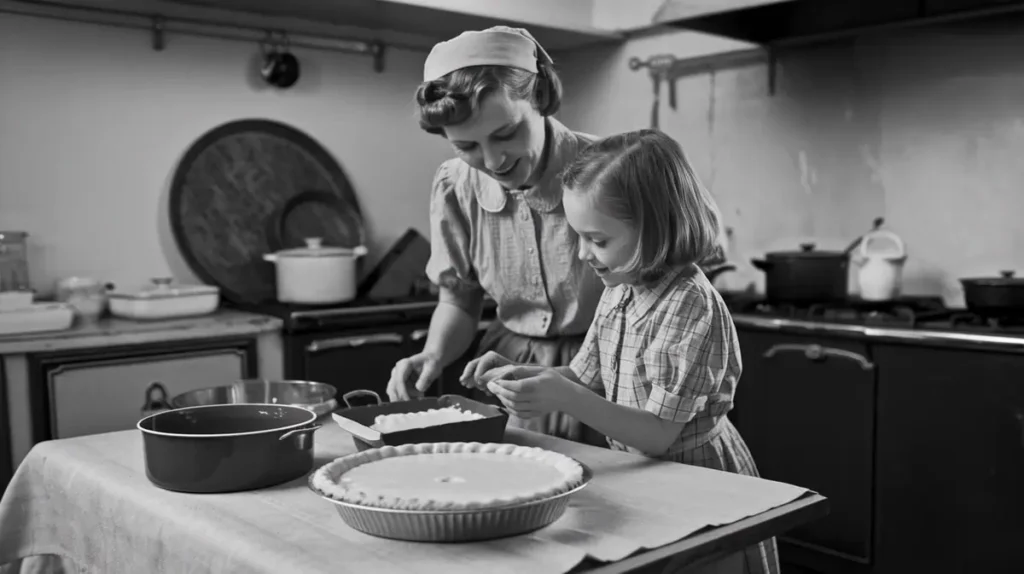
The Water Pie recipe dates back to the Great Depression, a time when families had to stretch every ingredient to its fullest potential. With food shortages and financial hardships affecting millions, home cooks relied on ingenuity to create filling meals and desserts using whatever was available. Water Pie emerged as one of the many resourceful recipes developed during this period, alongside other frugal desserts like Vinegar Pie and Mock Apple Pie, both of which replaced expensive ingredients with pantry staples.
Unlike traditional pies that require milk, eggs, or cream, the Water Pie recipe uses water as its main component. By combining it with sugar, flour, butter, and vanilla extract, bakers were able to create a custard-like filling that mimicked richer desserts. The result was a sweet and satisfying pie that required only the most basic ingredients, making it a staple in many struggling households.
Frugal cooking during the Great Depression extended beyond desserts. Many households also relied on simple, hearty meals like Baked Pancakes, which provided a cost-effective yet filling breakfast option. These recipes demonstrated how families made the most of what little they had, turning scarcity into creativity.
The popularity of Water Pie is now experiencing a revival, as modern cooks rediscover the beauty of Depression-era recipes. Websites like Serious Eats highlight the historical significance of such dishes, showing how they continue to inspire minimalist cooking today. By revisiting these time-honored recipes, home bakers can appreciate the resilience and resourcefulness of past generations while enjoying a slice of culinary history.
Why Water Pie is Trending Again
Nostalgia, TikTok, and the Revival of Vintage Recipes
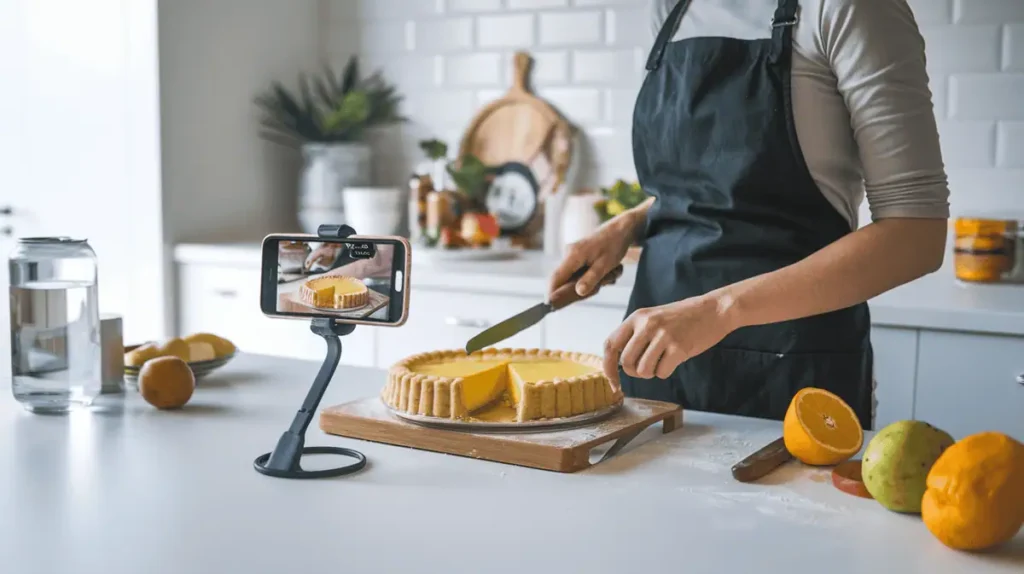
The Water Pie recipe has recently gained attention, thanks to the growing fascination with vintage cooking. As more people look back to the past for inspiration, old-fashioned recipes like Water Pie are making a comeback. Social media platforms, especially TikTok and YouTube, have played a major role in this revival, with home bakers sharing their experiences of recreating Depression-era dishes. Videos showcasing the simplicity of the Water Pie recipe have gone viral, sparking curiosity and encouraging thousands to try this historical dessert.
Nostalgia is another driving force behind the renewed popularity of Water Pie. Many people enjoy revisiting recipes from their grandparents’ time, finding comfort in the simplicity of Depression-era cooking. This trend extends beyond desserts—classic frugal meals like Baked Pancakes are also gaining recognition for their affordability and ease of preparation. The Water Pie recipe, in particular, embodies the idea that delicious food doesn’t need to be complicated or expensive.
Minimalist cooking has become increasingly appealing in today’s fast-paced world. With rising grocery costs, more people are looking for budget-friendly recipes that require only a few ingredients. Websites like AllRecipes and Simply Recipes offer extensive collections of cost-effective meals, highlighting the practicality of Depression-era dishes.
The resurgence of Water Pie is more than just a viral trend—it reflects a shift toward appreciating simple, resourceful cooking. By embracing these nostalgic recipes, home cooks are preserving culinary history while discovering that sometimes, the most basic ingredients create the most memorable flavors.
The Simple Ingredients of Water Pie
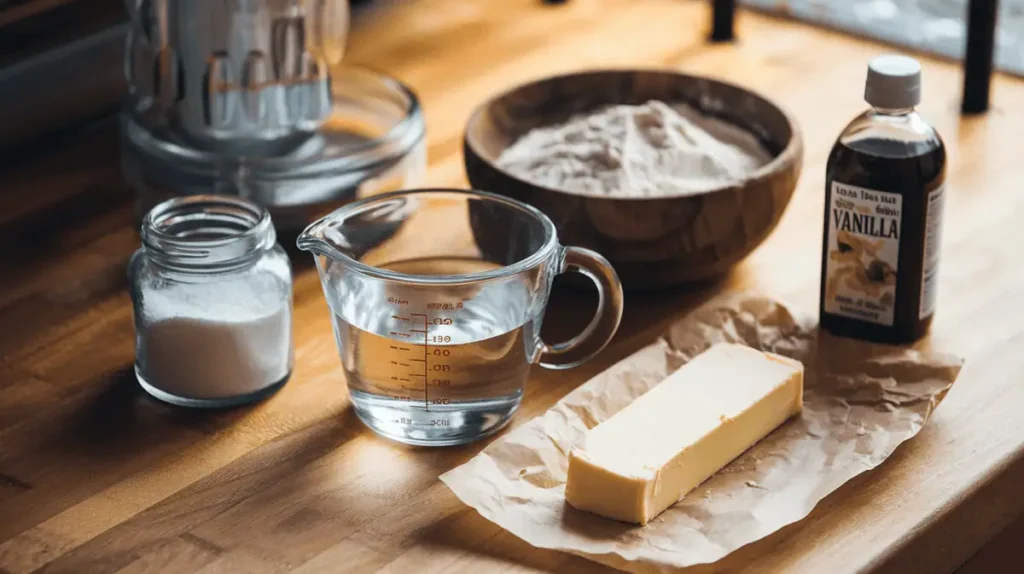
Why Minimalist Recipes Are Gaining Popularity
One of the key reasons the Water Pie recipe is making a comeback is its simplicity. Unlike traditional pies that require multiple ingredients, Water Pie consists of just a few pantry staples. This Depression-era dessert proves that even the most basic components can create a surprisingly delicious result. The essential ingredients for the Water Pie recipe include:
- Water – The main ingredient that gives this pie its unique texture.
- Sugar – Adds sweetness to balance the mild flavors.
- Flour – Acts as a thickening agent to create a custard-like consistency.
- Butter – Enhances the richness and flavor of the pie.
- Vanilla extract – Provides depth and aroma.
- Pie crust – A simple unbaked crust serves as the foundation for the filling.
This straightforward list reflects the principles of minimalist cooking, a trend that has gained widespread popularity in recent years. With busy lifestyles and rising grocery costs, many home cooks are embracing recipes that require fewer ingredients and less preparation time. The Water Pie recipe fits perfectly into this movement, proving that delicious desserts don’t need to be complicated.
Minimalist recipes also reduce food waste by encouraging the use of ingredients that are already available at home. Many traditional dishes, such as Baked Pancakes, follow the same principle—maximizing simple ingredients to create comforting meals. Additionally, websites like AllRecipes and Simply Recipes offer a variety of budget-friendly options, making it easier than ever to cook with limited resources.
The Water Pie recipe serves as a reminder that great food doesn’t have to be expensive or complex. As more people seek cost-effective, nostalgic, and easy-to-make dishes, Water Pie continues to shine as a timeless example of minimalist baking.
Step-by-Step Water Pie Recipe
Traditional Water Pie Recipe
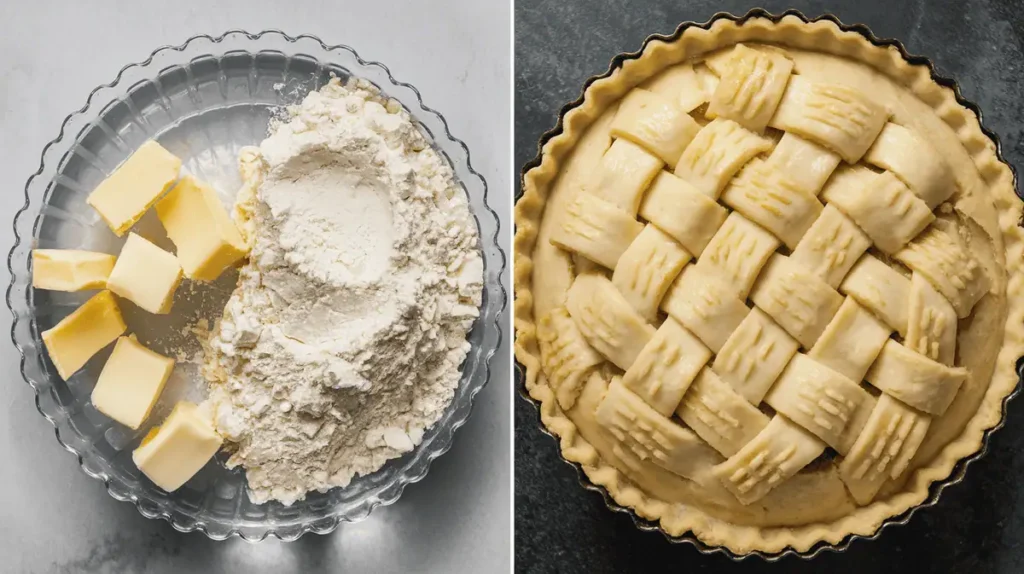
The Water Pie recipe is a simple yet fascinating dessert that requires only a few ingredients and minimal preparation. This Depression-era dish transforms basic pantry staples into a custard-like filling with a delicate, sweet flavor. If you’re looking for an easy, budget-friendly dessert, follow this step-by-step guide to making a traditional Water Pie recipe at home.
Ingredients:
- 1 unbaked pie crust
- 1 ½ cups water
- 4 tablespoons all-purpose flour
- 1 cup granulated sugar
- 5 tablespoons butter, cut into small pieces
- 1 teaspoon vanilla extract
Instructions:
- Preheat the oven to 400°F (200°C). Prepare a 9-inch pie pan by placing the unbaked pie crust inside.
- Pour the water directly into the pie crust. Unlike traditional pie fillings, this one starts as a liquid base.
- Mix the dry ingredients – in a separate bowl, combine the flour and sugar. Sprinkle this mixture evenly over the water.
- Add the vanilla extract by drizzling it gently over the surface of the pie.
- Dot with butter – place small pieces of butter evenly across the top. This will help create a rich, caramelized finish.
- Bake for 30-40 minutes until the top is golden brown and the filling has thickened. The pie will still appear slightly jiggly but will firm up as it cools.
- Let the pie cool completely before slicing. This allows the filling to set properly, ensuring a smooth texture.
Serving Suggestions:
Water Pie pairs well with classic comfort foods. For a complete Depression-era-inspired meal, serve it after enjoying Baked Pancakes for breakfast or a simple dinner.
If you’re looking for more vintage dessert ideas, explore Simply Recipes and AllRecipes for other historical treats like Vinegar Pie and Sugar Cream Pie.
The Water Pie recipe proves that delicious desserts don’t have to be complicated. With just a few ingredients and easy preparation, this old-fashioned pie remains a timeless and budget-friendly favorite.
Ingredient Substitutions & Variations
Modern Twists on a Classic Dessert
The Water Pie recipe may have originated during the Great Depression, but that hasn’t stopped modern bakers from putting their own spin on this classic dessert. While the traditional recipe relies on a simple combination of water, sugar, flour, butter, and vanilla, there are plenty of creative variations that enhance its flavor and texture. By making small adjustments, you can customize the Water Pie recipe to suit different dietary needs and taste preferences.
Popular Ingredient Substitutions:
- Coconut Water Pie – Replace regular water with coconut water for a subtle tropical twist. This variation adds a hint of natural sweetness and depth to the pie’s flavor.
- Dairy-Free Water Pie – Swap butter with plant-based margarine or coconut oil for a completely dairy-free version.
- Gluten-Free Water Pie – Use a gluten-free flour blend and a gluten-free pie crust to make this recipe accessible to those with gluten sensitivities.
- Reduced-Sugar Water Pie – Lower the sugar content by substituting half of it with a natural sweetener like stevia or monk fruit.
Flavor Enhancements:
- Cinnamon Sugar Water Pie – Sprinkle a dash of cinnamon and nutmeg into the flour mixture for a warm, spiced flavor.
- Lemon or Orange Zest Water Pie – Add citrus zest to the filling for a bright and refreshing twist.
- Almond or Maple Water Pie – Substitute vanilla extract with almond or maple extract for a unique flavor profile.
Serving Suggestions:
Water Pie pairs well with simple yet delicious accompaniments. Try serving it with Baked Pancakes for a comforting breakfast-inspired treat. If you’re interested in other minimalist desserts, explore AllRecipes or Simply Recipes for more budget-friendly baking ideas.
By experimenting with these ingredient swaps and enhancements, you can transform the Water Pie recipe into a personalized dessert that maintains its historical charm while catering to modern tastes.
The Science Behind Water Pie
How It Works Without Eggs or Dairy
The Water Pie recipe is a fascinating example of how basic ingredients interact to create a structured and flavorful dessert. Unlike traditional pies that rely on eggs and dairy for binding and richness, Water Pie achieves its texture through a unique combination of flour, sugar, and butter. Understanding the science behind this Depression-era recipe helps explain why it works so well despite its minimal ingredient list.
Flour and Water: The Thickening Agents
One of the key elements of the Water Pie recipe is the interaction between flour and water. When heated, flour absorbs water and swells, forming a gel-like consistency that thickens the filling. This is the same principle used in gravies and sauces, where flour creates a smooth, stable texture. In the absence of eggs, this reaction is essential for giving Water Pie its custard-like structure.
The Role of Sugar in Texture and Flavor
Sugar plays an important role in both the taste and consistency of Water Pie. As the pie bakes, the sugar dissolves in the water, forming a syrup that blends with the flour. This syrup caramelizes slightly in the oven, adding sweetness and depth to the final product. The sugar also helps balance the flavor, preventing the pie from tasting overly starchy.
Butter for Richness and Smoothness
Although the Water Pie recipe does not contain milk or cream, butter provides the necessary fat to create a smooth, rich mouthfeel. The small pieces of butter melt during baking, distributing evenly throughout the filling. This prevents the texture from becoming too grainy and enhances the overall taste of the pie. Without butter, the pie would still thicken, but it would have a less creamy consistency.
Vanilla Extract: Enhancing the Simplicity
Despite its minimal ingredients, Water Pie is not bland. The addition of vanilla extract enhances the overall flavor by adding warmth and depth. Even though it does not affect the pie’s structure, vanilla plays a crucial role in making this simple dessert taste more complex.
More Minimalist Baking Techniques
For those interested in vintage baking techniques, AllRecipes and Simply Recipes provide insights into other Depression-era desserts that rely on creative ingredient combinations. Additionally, pairing Water Pie with Baked Pancakes can create a nostalgic meal that highlights the ingenuity of frugal cooking.
Why Water Pie Works Without Eggs or Dairy
By relying on the natural thickening properties of flour, the caramelization of sugar, and the richness of butter, the Water Pie recipe achieves a surprisingly satisfying texture. This scientific approach to baking proves that even the simplest ingredients can come together to create a timeless and delicious dessert.
Nutritional Breakdown
Is Water Pie Healthy?
The Water Pie recipe is a fascinating example of how simple ingredients can create a satisfying dessert. However, when it comes to nutrition, it is important to examine its contents closely. While this Depression-era pie is budget-friendly and easy to make, it is not necessarily the healthiest dessert option.
Water Pie consists primarily of water, sugar, flour, butter, and vanilla extract. Since it lacks protein-rich ingredients like eggs or milk, it does not offer much in terms of nutritional value. The high sugar content makes it an energy-dense dessert, but it provides little fiber, protein, or essential vitamins. The Water Pie recipe is best enjoyed in moderation, especially for those monitoring their sugar intake.
Estimated Nutritional Values per Slice (1/8 of a pie):
- Calories: ~200-250 kcal
- Carbohydrates: ~35-40g
- Sugar: ~20-25g
- Fat: ~8-10g
- Protein: ~1-2g
- Fiber: ~0.5g
Although Water Pie is not the most nutrient-dense dessert, there are ways to make it slightly healthier. For example, using whole wheat flour instead of all-purpose flour can add a small amount of fiber. Additionally, reducing the sugar or replacing it with a natural sweetener like stevia or monk fruit can lower the overall calorie content.
For those looking for more balanced dessert options, Simply Recipes and AllRecipes provide a variety of low-sugar and nutrient-rich treats. Alternatively, pairing Water Pie with a protein-packed dish like Baked Pancakes can help balance the meal.
Ultimately, the Water Pie recipe is more about nostalgia and simplicity than nutrition. While it may not be the healthiest dessert, it remains a beloved treat that showcases the creativity of past generations.
Water Pie vs. Other Depression-Era Desserts
Comparing Budget-Friendly Desserts
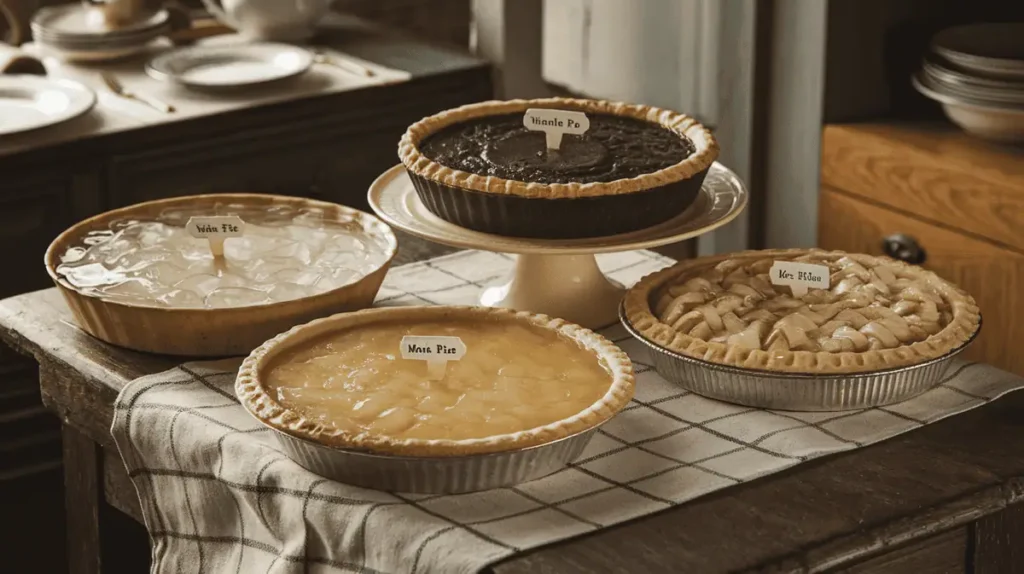
During the Great Depression, families had to make the most of limited ingredients. This led to the creation of inventive, low-cost desserts, including the Water Pie recipe. While Water Pie is one of the simplest, it is far from the only budget-friendly treat from that era. Several other desserts, such as Vinegar Pie, Mock Apple Pie, and Poor Man’s Cake, also emerged as creative solutions to food scarcity.
How Water Pie Compares to Other Depression-Era Desserts
| Dessert | Main Ingredients | Cost Efficiency | Flavor & Texture |
|---|---|---|---|
| Water Pie | Water, sugar, flour, butter, vanilla, pie crust | Very budget-friendly | Light, custard-like, slightly sweet |
| Vinegar Pie | Vinegar, sugar, flour, eggs, butter, pie crust | Affordable | Tangy, sweet, smooth filling |
| Mock Apple Pie | Crackers, sugar, lemon juice, cinnamon, butter | Budget-friendly | Sweet, apple-like flavor without apples |
| Poor Man’s Cake | Flour, sugar, dried fruit, spices, baking soda | Moderate cost | Dense, spiced, slightly fruity |
| Bread Pudding | Stale bread, milk, sugar, eggs, cinnamon | Affordable | Soft, custard-like, spiced |
The Water Pie recipe stands out due to its extreme simplicity. Unlike Vinegar Pie or Poor Man’s Cake, it does not require eggs, milk, or fruit, making it one of the most minimalist desserts from the Depression era. Instead of relying on rich ingredients, it thickens using just flour and water, demonstrating how resourceful bakers were at the time.
Many of these historical desserts are still enjoyed today. For example, Simply Recipes and AllRecipes offer variations on Vinegar Pie and Bread Pudding, proving that budget-friendly desserts remain relevant. Additionally, pairing Water Pie with a classic dish like Baked Pancakes can create a comforting, nostalgic meal.
While the Water Pie recipe may not be the richest or most flavorful dessert, its historical significance and affordability make it an enduring favorite. Depression-era desserts like these remind us that even the simplest ingredients can come together to create something delicious and satisfying.
Why People Love Water Pie
Reviews and Personal Stories
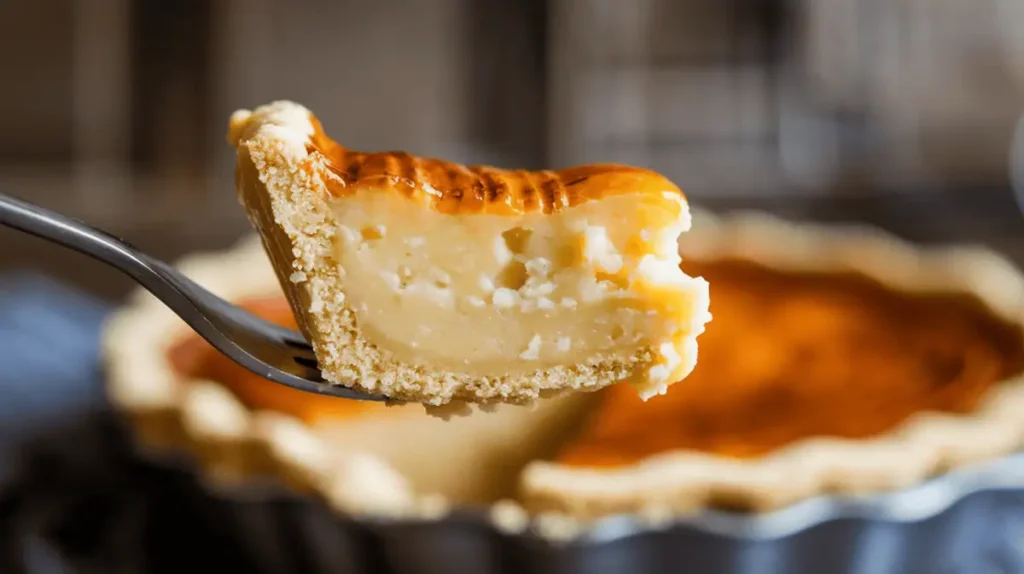
The Water Pie recipe has captivated home bakers for generations, not only because of its simplicity but also due to its historical significance. As a dessert born from hardship, it represents resilience, creativity, and the ability to make something delicious out of almost nothing. Today, thanks to social media and a renewed interest in vintage cooking, more people are rediscovering this Depression-era classic and sharing their experiences.
What People Are Saying About Water Pie
Many who try the Water Pie recipe are surprised by its unique texture and delicate sweetness. While it may not be as rich as a traditional custard or fruit pie, its soft, buttery filling and slightly caramelized top create a satisfying dessert. Reviews on platforms like AllRecipes and Simply Recipes highlight how easy it is to make, with bakers appreciating its affordability and nostalgic charm.
Some describe Water Pie as a cross between a custard and a sugar pie, while others compare it to classic Southern desserts like chess pie. The simplicity of the recipe also allows for creative variations, with bakers experimenting by adding spices, citrus zest, or different extracts to enhance the flavor.
Personal Stories: Nostalgia and Family Traditions
For many, the Water Pie recipe is more than just a dessert—it’s a connection to the past. Some people recall their grandparents making it during difficult times, while others have discovered it through vintage cookbooks or TikTok videos. The pie serves as a reminder of family traditions and the resourcefulness of earlier generations.
Pairing Water Pie with other Depression-era favorites, like Baked Pancakes, can create a meal that honors the simplicity and ingenuity of the past. Whether it’s enjoyed for its history, ease of preparation, or nostalgic taste, Water Pie continues to find a place in modern kitchens.
Best Ways to Serve Water Pie
Perfect Pairings and Serving Suggestions
The Water Pie recipe is a simple yet delightful dessert that can be enjoyed on its own or paired with complementary flavors to enhance its taste. Since Water Pie has a mild, custard-like texture with a subtle sweetness, serving it with the right accompaniments can elevate the overall experience. Whether you prefer a classic approach or a creative twist, there are many ways to make this Depression-era dessert even more enjoyable.
Classic Pairings for Water Pie
- Whipped Cream – A dollop of homemade or store-bought whipped cream adds lightness and richness, balancing the simplicity of the Water Pie recipe.
- Vanilla Ice Cream – The cold, creamy texture of vanilla ice cream creates a perfect contrast with the soft, warm pie.
- Cinnamon or Nutmeg Dusting – Sprinkling a pinch of cinnamon or nutmeg over the pie enhances its flavor with warm, aromatic notes.
- Honey or Maple Syrup Drizzle – A small drizzle of honey or maple syrup can provide an extra layer of sweetness without overpowering the pie’s delicate taste.
Beverage Pairings
- Hot Tea – A cup of black tea, chamomile, or spiced chai pairs beautifully with the subtle flavors of Water Pie.
- Coffee or Espresso – The mild sweetness of the Water Pie recipe balances well with the boldness of freshly brewed coffee.
- Warm Milk or Almond Milk – For a comforting and nostalgic touch, pair a slice of Water Pie with a glass of warm milk or almond milk.
Serving Water Pie with Other Classic Dishes
Water Pie can also be served alongside other Depression-era or minimalist recipes for a complete vintage-inspired meal. For example, enjoying it after a breakfast of Baked Pancakes makes for a simple yet satisfying combination. If you want to explore more classic dessert ideas, websites like AllRecipes and Simply Recipes offer a variety of complementary treats.
How to Present Water Pie Beautifully
- Serve chilled or at room temperature – Allowing the pie to cool completely helps it set properly and makes slicing easier.
- Use decorative plates – Serving Water Pie on vintage-style dishes enhances its nostalgic charm.
- Add fresh fruit on the side – Sliced strawberries, raspberries, or peaches provide a fresh contrast to the pie’s creamy texture.
Final Thoughts on Serving Water Pie
The Water Pie recipe is a humble yet versatile dessert that pairs well with various flavors and textures. Whether you enjoy it plain, with a scoop of ice cream, or alongside a warm beverage, there are many ways to serve and enhance this Depression-era classic. By experimenting with different pairings and presentations, you can make this simple pie feel like a timeless culinary treat.
Common Mistakes and How to Avoid Them
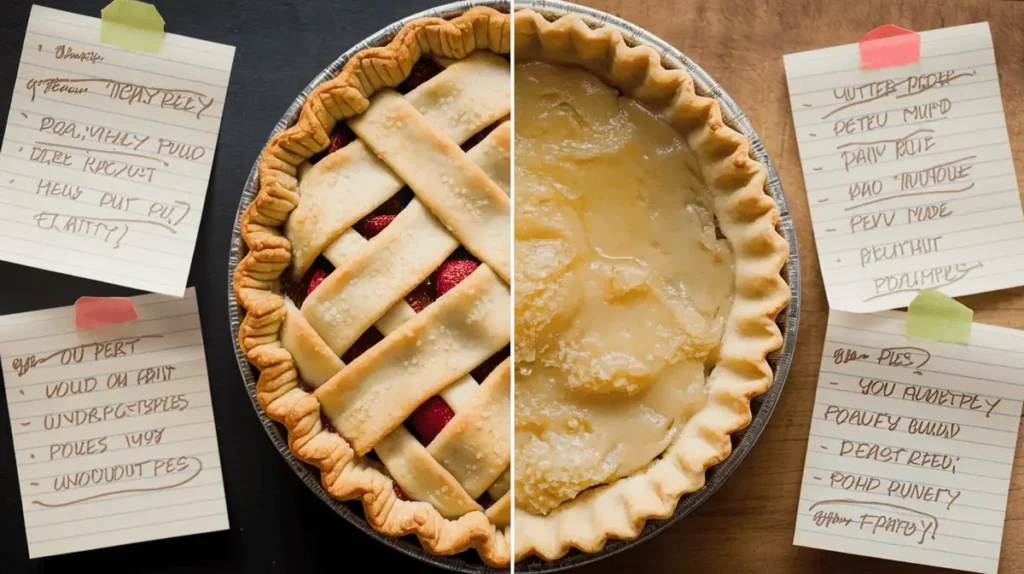
Troubleshooting Guide for First-Timers
Making the Water Pie recipe is simple, but first-time bakers may run into a few common mistakes. Since this Depression-era dessert has an unusual method, understanding how to troubleshoot potential issues can help you achieve the best results. Below are some of the most frequent problems and how to fix them.
1. The Pie is Too Runny
One of the biggest concerns when making the Water Pie recipe is a filling that remains too liquid after baking. Since this pie does not contain eggs or dairy to bind it, proper thickening relies on flour and the right baking time.
How to Fix It:
- Let it cool completely – The filling continues to set as it cools. Give it at least 2-3 hours at room temperature before slicing.
- Check your flour-to-water ratio – If the filling is too thin, try increasing the flour slightly in your next attempt.
- Bake a little longer – If the pie is still too liquid after cooling, bake it for an additional 5-10 minutes, keeping an eye on the crust.
2. The Crust Becomes Soggy
Since the Water Pie recipe starts with a liquid filling, the crust can absorb moisture and become too soft.
How to Fix It:
- Pre-bake the crust – Blind baking (pre-baking the pie crust for 5-7 minutes before adding the filling) can help create a firmer base.
- Use a metal or glass pie dish – These materials help distribute heat more evenly, preventing a soggy crust.
- Let the pie cool before slicing – Cutting into it too soon can cause the filling to seep into the crust.
3. The Pie is Too Sweet
Since Water Pie contains a high amount of sugar, some people may find it too sweet for their taste.
How to Fix It:
- Reduce the sugar slightly – Cutting back the sugar by ¼ cup can make the pie less sweet without altering the texture too much.
- Add a pinch of salt – A small amount of salt can balance the sweetness and enhance the overall flavor.
- Pair it with a less sweet accompaniment – Serving Water Pie with unsweetened whipped cream or a simple side like Baked Pancakes can help mellow out the sweetness.
4. The Butter Doesn’t Distribute Evenly
Since Water Pie relies on small pieces of butter melting throughout the filling, uneven distribution can lead to some sections being richer than others.
How to Fix It:
- Cut the butter into small, even pieces before placing them on top of the filling.
- Spread the butter evenly across the surface to prevent it from pooling in one area.
- Do not stir the filling after adding the butter, as the pie thickens naturally during baking.
5. The Pie Lacks Flavor
Water Pie has a mild flavor, which some people may find too plain.
How to Fix It:
- Enhance the vanilla extract – Using a high-quality vanilla extract or adding an extra ½ teaspoon can bring out more depth.
- Experiment with spices – A sprinkle of cinnamon, nutmeg, or lemon zest can add complexity to the pie’s flavor.
- Pair it with fruit or nuts – Serving Water Pie with fresh berries or a handful of toasted nuts can add texture and contrast.
Final Thoughts on Avoiding Mistakes
While the Water Pie recipe is straightforward, small adjustments can make a big difference in the final result. Whether you’re aiming for a firmer filling, a crispier crust, or a balanced sweetness, following these troubleshooting tips will help you perfect this Depression-era dessert. For more vintage baking inspiration, explore recipes from AllRecipes and Simply Recipes to discover other simple, budget-friendly treats.
FAQs About Water Pie
Answering the Most Common Questions
The Water Pie recipe has intrigued bakers with its simplicity and historical roots. However, since it is quite different from traditional pies, many people have questions about how it works, how it tastes, and how to make it successfully. Below are answers to some of the most frequently asked questions about Water Pie.
1. What does Water Pie taste like?
Water Pie has a mild, sweet, and buttery flavor with a texture similar to a soft custard or sugar pie. While it does not have a strong taste on its own, the vanilla extract and caramelization of sugar create a delicate, comforting sweetness.
2. Can I make Water Pie without butter?
Yes, but the butter adds richness and helps create a smooth texture. If you want a dairy-free version, you can substitute margarine or coconut oil. However, without any fat, the pie may turn out less creamy and slightly more gelatinous.
3. How do I know when Water Pie is fully baked?
The Water Pie recipe is done when the top looks golden brown, and the filling appears set but slightly jiggly in the center. It will continue to firm up as it cools. Let the pie rest for at least 2-3 hours before slicing to allow the filling to set properly.
4. Can I make Water Pie gluten-free?
Yes, you can use a gluten-free flour blend in place of regular flour. Additionally, a gluten-free pie crust will ensure that the entire recipe remains gluten-free. Keep in mind that different gluten-free flours may alter the texture slightly.
5. Can I reduce the sugar in Water Pie?
Yes, you can reduce the sugar slightly without affecting the pie’s structure. Cutting the sugar by ¼ cup can make the pie less sweet while still maintaining its texture. Some bakers also use natural sweeteners like monk fruit or stevia, but this may slightly alter the consistency.
6. How should I store Water Pie?
Water Pie should be stored in the refrigerator, covered with plastic wrap or foil. It will stay fresh for up to 3 days. If you prefer to serve it warm, you can reheat individual slices in the microwave for about 15-20 seconds.
7. Can I freeze Water Pie?
Freezing is not recommended because the high water content can cause the texture to become too watery or grainy when thawed. However, if you do freeze it, wrap it tightly in plastic wrap and store it for up to 1 month. Let it thaw in the refrigerator before serving.
8. What can I serve with Water Pie?
Water Pie pairs well with a variety of accompaniments, including:
- Whipped cream or vanilla ice cream for added richness.
- A dusting of cinnamon or nutmeg to enhance the flavor.
- Fresh fruit, such as berries or sliced peaches, for a fresh contrast.
- A warm drink, like coffee or tea, to balance the sweetness.
For more serving ideas, consider pairing it with Baked Pancakes for a comforting, old-fashioned meal.
9. Is Water Pie the same as Vinegar Pie or Sugar Pie?
No, but they share similarities. Vinegar Pie uses vinegar to add tartness and balance sweetness, while Sugar Pie (often made in French-Canadian cuisine) is richer and contains cream or milk. The Water Pie recipe is unique in that it relies entirely on water, flour, sugar, and butter to create its structure.
10. Why is Water Pie trending again?
Water Pie has gained popularity due to social media platforms like TikTok and YouTube, where home bakers enjoy experimenting with vintage and minimalist recipes. Many people are fascinated by how a dessert with such basic ingredients can turn out delicious. Additionally, websites like AllRecipes and Simply Recipes continue to share variations, keeping the recipe relevant for modern audiences.
Final Thoughts on Water Pie
The Water Pie recipe is a testament to the ingenuity of Depression-era cooking. Whether you’re trying it out of curiosity, nostalgia, or a love for minimalist baking, understanding its history and science makes the experience even more rewarding. With the right techniques and a few creative variations, Water Pie remains a simple yet delightful dessert worth trying.
Final Thoughts
The Timeless Charm of Simple Recipes
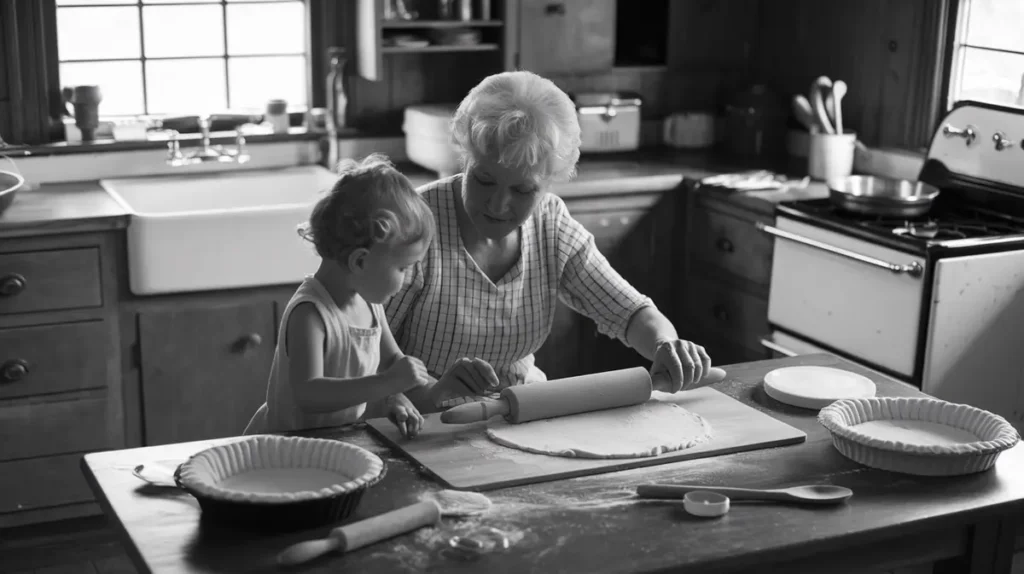
The Water Pie recipe is more than just a dessert—it is a symbol of resilience, creativity, and the ability to make something delicious with very little. Originating from the hardships of the Great Depression, this humble pie reminds us that simple ingredients can still create a satisfying treat. Its recent revival on social media has introduced a new generation to vintage recipes, proving that even the most frugal dishes can stand the test of time.
Minimalist cooking, like the Water Pie recipe, has become increasingly popular as people look for budget-friendly, easy-to-make meals. In today’s world, where elaborate recipes often dominate, this dessert serves as a reminder that sometimes, less is more. By using water, sugar, flour, butter, and vanilla extract, Water Pie achieves a delicate balance of sweetness and texture without the need for eggs or milk.
Whether you try it for nostalgia, curiosity, or as an appreciation of Depression-era ingenuity, Water Pie remains a fascinating part of culinary history. Pairing it with other simple dishes, such as Baked Pancakes, can create a meal that honors the past while still being enjoyable today. For those who love exploring historical recipes, resources like AllRecipes and Simply Recipes offer even more ways to embrace old-fashioned cooking.
The Water Pie recipe is proof that great food doesn’t always require complex techniques or expensive ingredients. As long as there is a desire to bake and a willingness to experiment, even the simplest recipes can become treasured favorites.
References & External Resources
Further Reading
For more information on Water Pie and other Depression-era recipes, check out the following resources:
- AllRecipes – Water Pie Recipe: A collection of classic and modern takes on vintage recipes.
- Simply Recipes – Depression-Era Cooking: A deep dive into frugal, minimalist cooking from the past.
- Serious Eats – Classic American Desserts: A historical look at traditional American desserts, including budget-friendly pies.
- Fast Track Recipes – Baked Pancakes: A complementary simple recipe that pairs well with Water Pie.
By exploring these resources, you can gain a deeper appreciation for Depression-era baking and discover more ways to bring vintage flavors into your kitchen. The Water Pie recipe may be a product of hard times, but its enduring appeal proves that simple, affordable cooking will always have a place in our homes.

